Fotografía: Omar Bárcena, Attribution-NonCommercial 2.0 Generic (CC BY-NC 2.0)
La escultura Sin título de Jorge Dubón lleva mucho tiempo en la explanada principal de la pista de canotaje de Cuemanco. Al haber estado descuidada durante un largo tiempo, muchos la confunden con un vestigio arquitectónico en el extremo norte de un estacionamiento. A veces se le llama “Estación 18”, nombre que alude a su pertenencia a la Ruta de la Amistad. La Ruta Escultórica de la Amistad es una serie de obras escultóricas públicas creadas en los meses previos a los Juegos Olímpicos de 1968. La mayoría de ellas están dispuestas en torno a diversos cruces entre Periférico y Coyoacán o Tlalpan.
La obra de Dubón está muy lejos del recorrido actual, al igual que lo están las tres obras de los artistas invitados, es decir, las de Alexander Calder, Germán Cueto y Mathias Goeritz, quienes organizaron toda la exposición.
La escultura tiene dos cuerpos. Uno es una gran columna tubular abierta pintada en color gris plomizo. El otro es una torre de forma orgánica que recuerda a la letra “T”, pintada en amarillo. De forma muy inusual, para realizar la obra Dubón trabajó por completo con concreto fundido. Era famoso por trabajar de forma sustractiva, sin añadir nada a una forma determinada, gracias a ello, varias de sus obras se compararon con la antigua técnica escultórica mesoamericana. Sin embargo, en este caso, la técnica de Dubón puede tener su explicación en las directrices que Goeritz estableció para la exposición. La mayoría de las obras están hechas de la misma forma.
Cuando se redactó este artículo, las obras estaban en proceso de restauración.
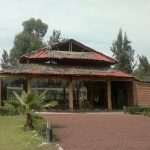
Cercano a 0.18 kms.
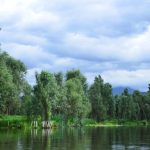
Cercano a 0.41 kms.

Cercano a 0.60 kms.
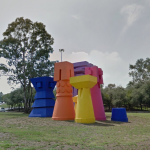
La estación 14 de la Ruta de la Amistad es una Tertulia de Gigantes.
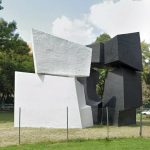
Olivier Seguin's massive black and white work for the 1968 Olympics.
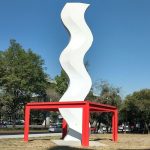
La estación 17 de la antigua Ruta de la Amistad es una sorprendente obra del artista marroquí Mohammed Melehi.

Willi Gutmann's 1968 work is among the most prominent on the Insurgentes interchange.
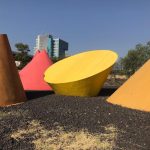
Estación nº 10 de Grzegorz Kowalski en la Ruta de la Amistad...